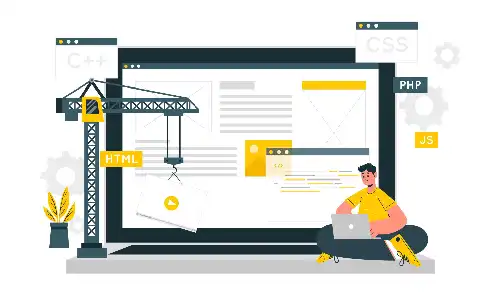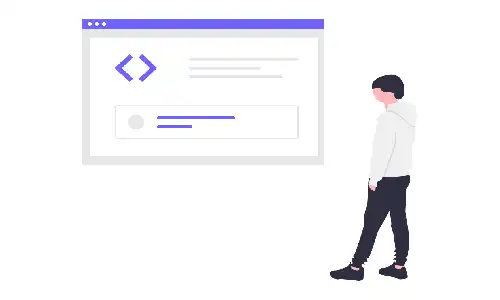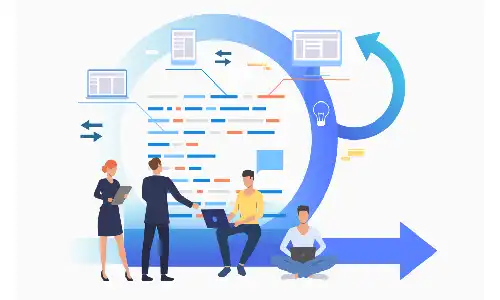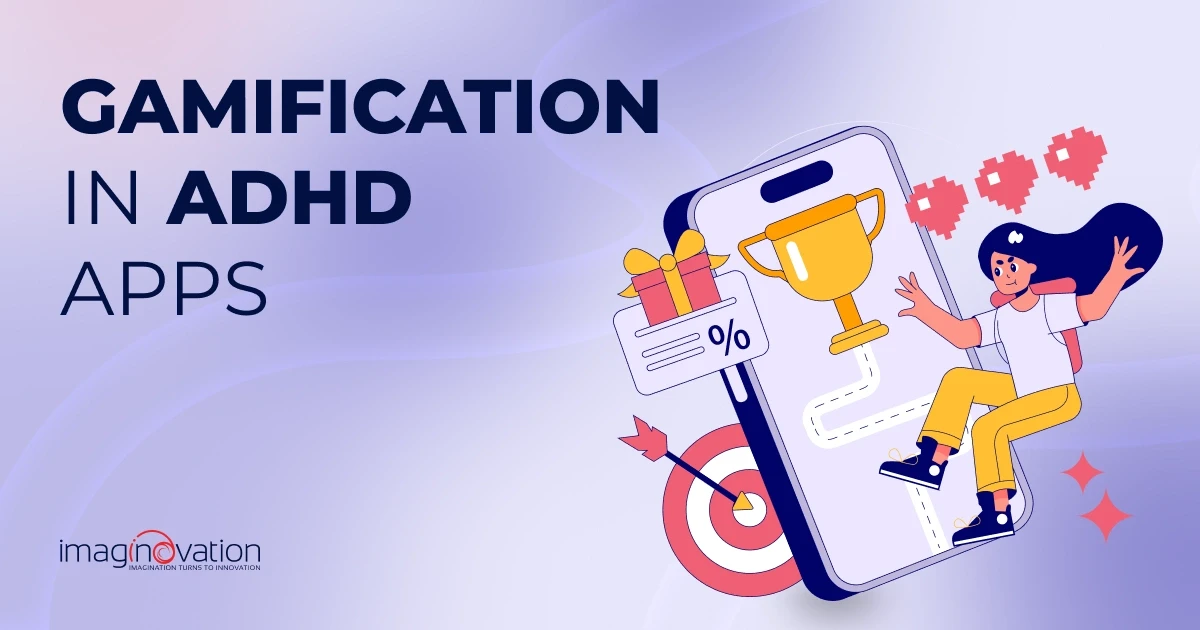Are you a non-technical founder eager to bring your brilliant business idea to life? Technology can be a complex and intimidating world, especially if you're not well-versed in the jargon and intricacies of software development. But fear not! In this article, we're here to demystify the technology stack and break it down into simple, digestible pieces.
Whether you're planning to build a web application, mobile app, or any other tech-driven solution, understanding the technology stack is crucial for making informed decisions, hiring the right talent, and effectively communicating with your development team.
Join us as we unravel the mysteries of front-end and back-end development, databases, frameworks, and more. We'll provide you with a non-technical founder's guide to the technology stack, explaining the key components and their roles in bringing your vision to fruition.
No more feeling overwhelmed or out of your depth when discussing technology with your team. Let's dive in and empower you to navigate the world of tech with confidence and clarity!
What is a Technology Stack?
Tech stack or technology stack is one of the most commonly thrown around technical buzzwords.
So let us clear the mystery behind this buzzword.
A technology stack is a set of technology services developers use to build a digital product, such as a website, web application, or mobile application.
It includes all the software platforms, technology tools, frameworks, and programming languages a company would need to build and run an IT solution.
Let’s take the example of the popular microblogging and social networking service – Twitter. Twitter’s tech stack combines many coding frameworks, programming languages, and databases, including jQuery, Node.js, React, MySQL, GraphQL, Rails, Scala, Apache Storm, and many more.
There are two aspects to a tech stack – the client-side (front-end) and server-side (backend).
I’ll tell you how both differ.
Client-side or Front-end
It refers to all the application components users directly interact with or view on their screens. For example, all the graphics, buttons, links, and other elements contributing to the user experience are part of the front end.
A few front-end technologies that you can use are:
- HTML– HTML or Hypertext Markup Language is a good choice for structuring and placing content.
- CSS– CSS or Cascading Style Sheets determines how the content is displayed. It controls fonts, colors, spacing, layout, and many other aspects.
- JavaScript– It adds interactivity and thus enhances the functionality of your digital product.

Server-side or Backend
It consists of all the technology components users do not interact with directly or even see but are necessary for the client-side or front-end technologies to function. It supports the inner workings of your application.
The server-side or back end consists of:
- Programming languages such as PHP or Python to code and create your application.
- A framework like Django or Ruby on Rails simplifies the app development process.
- A database such as MySQL, PostgreSQL, etc, stores coding and data.
- A server such as Apache, Nginx, etc., to store, process, and deliver your coded content to app users as an application or website.
How to Choose The Right Technology Stack to Use?
Whether you’re a technical genius or not, you have to be careful with your choice of technology stack.
The key is to avoid any temptation to bank on personal preferences and previous experiences to find an easy way out just because your employees have a specific skill set and a technology already available with you in the form of legacy.
So, what’s the right approach?
Here’s what you must consider while choosing the tech stack for you.

1. Project Requirements
Before zeroing in on any particular tech stack, make sure you understand the project requirements.
Evaluate your project’s type, complexity, novelty, structural scope, user base, and other factors.
That’s because some things are better done in one technology than another.
For example, WordPress and Drupal are excellent choices for bloggers needing websites. On the other hand, if your digital product needs real-time functionality, like a chatbot, you can settle for Node, which works wonderfully well with concurrency.
What is the scope of your project? Small-scale projects do not usually require advanced technologies. But if your project is large-scale with complex business logic requirements. Then, you will need a variety of programming languages and frameworks.
If your solution needs to be connected with Machine learning and big data, choose a language such as Python since it works perfectly with large volumes of data.
Do you expect your app’s front-end UI to be full of complex interactions? Then React or Angular may be a good choice for you.
Remember, apps need to be built with users’ ease and requirements in mind. Think about providing your users with a great experience.
The bottom line is to understand your project goals and business objectives first so that you do not go wrong in your tech stack selection.
2. Future Scalability Requirements
Your application’s scalability is an essential factor for technology selection.
Scalability ensures you can evolve your application in the future, making it better and more relevant.
There are two ways you can scale your digital product – horizontally and vertically. While horizontal scalability makes your application more capable of use on additional devices, vertical scalability adds newer and exciting features to the app.
If you ignore this aspect, you are bound to face difficulty whenever you decide to include additional services and features in your app.
However, be careful! Do not invest too much in costly tech tools in anticipation of exponential growth. You might run out of budget even before your application becomes a success.
So, the trick is to be cautious. Make sure the tech stack you choose has the potential to scale sufficiently if required. After all, the scalability of your stack determines if your app can handle overloads in the future.
3. Tech Stack Ecosystem
When selecting a tech stack that suits your digital project requirements, check out sufficient information and a big enough community around the technology.
That’s because if your team stumbles upon a problem or an issue at any step, your team should be able to find enough information and a solution to move forward.
For example, a big enough Ruby community runs regular meetings. Ruby is also one of the most trending languages on the social coding site Github. So anyone using Ruby in their tech solution can get support from these communities if there’s an issue.
Another factor contributing to your tech stack ecosystem is the maturity of the technology. It simply means that the earlier a technology is in its lifecycle, the less reliable it may be.
For example, today, developers consider Ruby reliable and low-risk after many iterations. Moreover, mature technologies also have additional tools to make developers' lives easier.
Therefore, the more mature a technology is, the larger its resource base and community.

4. Availability of Resources
Your tech stack selection shouldn’t happen without considering the resources at your disposal. This includes human resources - your team's skillset and expertise, budgeting, and other timeline constraints.
Your developers need to have expertise in using all the layers of your stack to finish a project. There’s no harm in adopting new technologies, but don’t forget about the learning curve's timeline, effort, and cost.
Besides, new technology can make the hiring process difficult. So before making your final decision, check if you can easily find another developer familiar with the latest technology stack.
Check if the skills needed are transferable. See if it is practical for your developers to get trained. Can you afford to have a team with no experts in your chosen tech stack?
Calculate how many developers will be needed to complete the job.
The trick is to critically evaluate the pros and cons of your choice before kicking off the app development.
5. Cost
Ensure that the cost of implementing new technology does not outweigh its benefits.
After all, spending more on ready-made tech tools may allow you to build your application quickly, but it can come with tradeoffs, especially if the devices have limitations.
Affordable technologies aren't risk-free if they do not have the technical requirements your application needs.
Budgeting the tech stack is essential, but it is one of the trickiest things in the entire process. Why?
Well, software building demands finances to move forward. Include the following when you evaluate the cost of your tech stack:
- Hosting costs to keep the product data
- Developers' remuneration
- Technology training & licensing fees
- Subsequent costs for maintenance
6. Maintenance
And you thought your work was done when you released your app!
Sadly, that’s not the case.
Ongoing maintenance is a vital part of any digital project.
Check if you’ll be able to provide support for your digital product whenever there’s a requirement for troubleshooting or an upgrade.
Consider using open-source tools and technology. It warrants modifications and updates to your project without unnecessary restrictions.
7. Security
Some apps need a higher level of security than others.
Security is undoubtedly essential if you plan to build an application dealing with private financial or medical data.
You may also need to address mandatory licensing or regulatory requirements in some cases.
If security is a priority, go for more secure technologies like Ruby on Rails.
How Will The Wrong Choice of Tech Stack Jeopardize Your Project?
A wrong choice of technology stack means inadequate for your business and project needs.
Selecting an inadequate, outdated, or unproven technology stack can prove expensive and ultimately cost you time and effort. Here's how a wrong choice affects your project.
- If you begin a project with an unfitting stack, you will not be able to reach the finishing line in a strong likelihood. Unfortunately, you realize this too late in some cases – after spending most of your budget.
- Your project can face massive delays after adopting a new tech stack midway. Why? A new stack would need additional time to adapt and build your application from the ground up.
- When you choose outdated and old-school technology, you are bound to face difficulty finding developers to expand your app. As a result, you won't upgrade your application and add better and new features. You'll lose clients and miss business goals. Moreover, you'll end up spending more to hire people who can work with outdated technology.
- Transferring your app to new technology and rewriting it can be difficult, expensive, and time-consuming. That means there are chances you’ll overshoot the budget of your project.
- The outdated tech stack can become unsustainable later.
- Opting for an outdated or unproven tech stack can add security vulnerabilities to your product.
- It also carries a poor reputational risk for your business.
Build Powerful Web and Mobile Applications With Imaginovation
Settling for a fitting technology stack for your app development project can be an easy task if you understand how to do it well enough.
Reach out to us at Imaginovation. We are experienced in building web and mobile applications. We will advise you about which elements to choose for your tech stack and build an app based on what’s right for you.
Imaginovation is an award-winning web and mobile app development company with vast experience crafting remarkable digital success stories for diverse companies.
Ready to build an app, but not sure where to start?
We've got you covered. Click the button below to get started.





